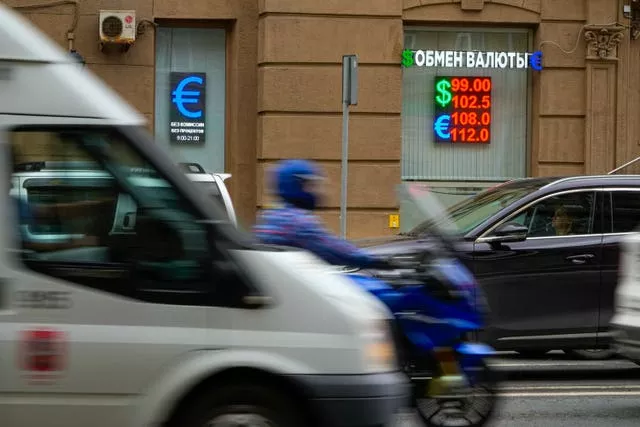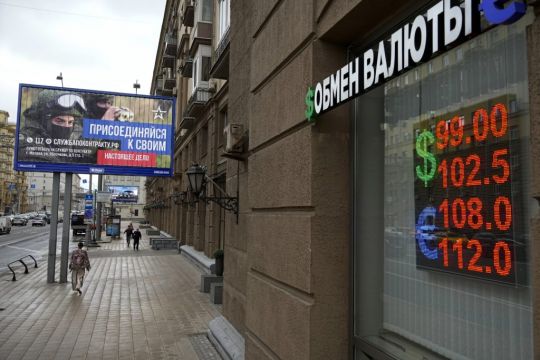Russia’s central bank has raised its key interest rate by 3.5% in a move designed to fight inflation and strengthen the ruble after the country’s currency reached its lowest value since early in the war with Ukraine.
The decision was announced after an emergency meeting of the bank’s board of directors was called a day earlier as the ruble declined.
The fall comes as Moscow increases military spending and Western sanctions weigh on its energy exports.
The Russian currency passed 101 rubles to the dollar on Monday, losing more than a third of its value since the beginning of the year and hitting the lowest level in almost 17 months. It had recovered slightly after the central bank announced the meeting.

President Vladimir Putin’s economic adviser Maksim Oreshkin blamed the weak ruble on “loose monetary policy” in an op-ed, adding that the central bank has “all the tools necessary” to stabilise the situation and that he expects normalisation shortly.
By raising borrowing costs, the central bank is trying to fight price spikes as Russia imports more and exports less, especially oil and natural gas, with defence spending going up and sanctions taking a toll.
Importing more and exporting less means a smaller trade surplus, which typically weighs on a country’s currency.
The bank also made a big rate hike of 1% last month, saying inflation is expected to keep rising and the fall in the ruble is adding to the risk.
After Western countries imposed sanctions on Russia over the invasion of Ukraine in February 2022, the ruble plunged as low as 130 to the dollar but the central bank enacted capital controls that stabilised its value.







